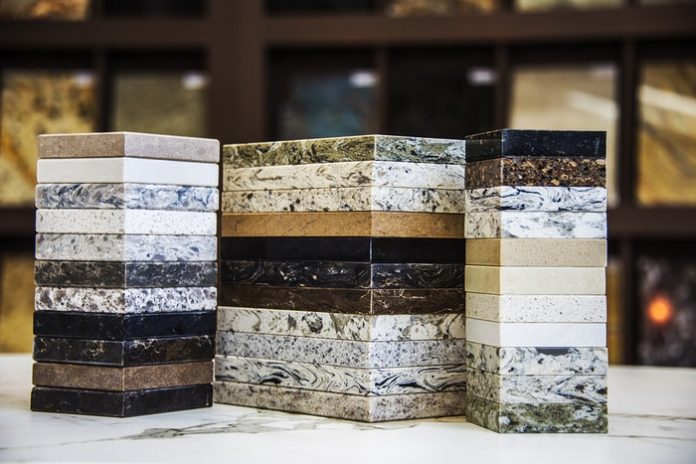
If you love cooking, you might look at the kitchen as more than just a space to prepare dishes. Perhaps, it is also a place of inspiration and relaxation where you can have a “me time” and just be yourself while cooking. However, when it comes to designing this home space, you have to consider two things.
Other than its overall aesthetics, you have to ask yourself if it will be convenient for you to use during cooking. For example, your cooking appliances and utensils should have enough space and that you can find each of them easily. And another consideration is how easy will it be to clean and maintain.
Cooking is messy, but proper sanitation is important in food preparation. Not to mention, it’s also difficult to work around a space full of clutter. And one of the areas in the kitchen that takes the most beating is the countertop. You’ll use it from cooking to serving, and it is even the focal point of the kitchen itself.
Since you are here, you are probably eyeing a granite countertop. Well, we don’t blame you because it is a gorgeous and durable stone. It might even stay this way with proper maintenance, as mentioned here. However, we want you to read the information below so that you can confirm if this investment is for you.
What are Granite Countertops?
Granite is an igneous rock that has grains of minerals to which it owes its different colors. You can typically find minerals such as quartz, potassium feldspar, biotite, hematite, muscovite, mica, or amphiboles on granite. And the most abundant mineral will determine the color of the granite (e.g., potassium feldspar makes pink granite.)
Types of Granite Countertops
- Black and White Granite
This is probably the most commonly seen granite countertop. It is composed of equal parts of quartz and feldspar, as well as amphiboles for the black speckling.
- White Granite
You won’t find a purely white granite, but if you do, it’s likely a quartzite. On the one hand, true white granite is composed of quartz, feldspar, and sometimes, amphibole grains that give it black specks.
- Black Granite
Just like the previous white granite, you won’t find a pure black granite. For countertops, manufacturers usually use another igneous rock called gabbro.
- Pink Granite
The abundance of potassium feldspar gives the granite a salmon pink color. However, the rock can also have other minerals that give black and white specs to the pink color.
- Red Granite
Red granite is basically a variation of the pink one above. Instead of achieving a lighter color, it gets darker either from the feldspar or hematite.
- Blue Granite
Besides the black granite, blue granite is another misnomer in the market. It may look like an ordinary granite countertop, but manufacturers use another igneous rock called larvikite. Besides larvikite, blue granite can also be from anorthosite to achieve a blue color.
- Green Granite
You can achieve a green color on the granite with the help of amazonite. However, most green granite countertops in the market are not really granite. Instead, they are a green variety of marble.
Why Consider a Granite Countertop?
This availability of colors such as white, gray, black, or pink makes granite versatile as a countertop material. You can easily find a granite type that looks fitting to your kitchen’s overall look. But other than their beauty, granite countertops also perform well for kitchen tasks.
Volcanic magma forms granite over time. And the result is a durable material that even makes it popular for building homes. This solid built of granite means it can withstand kitchen duties without acquiring too much wear and scratches. Not to mention, it is also heat-resistant, so having it close to the stove or if you have to put a hot pan on it, it still wouldn’t get damaged.
Why is a Granite Countertop Not for Everybody?
The answer above is one word, maintenance. Compared to other countertops, you have to make an effort to keep your granite pristine-looking and durable. What we mean by this is you have to get a good quality granite sealer to prevent stains from seeping inside.
This will keep the granite looking good and also avoid damage on the inside from spills. The thing is, granite is porous. And in the kitchen, spills, and leaks happen easily. Therefore, you have to address this issue by both seasonal and daily maintenance.
Depending on the quality of your granite countertop, you might need to seal less often or more often. However, if this drawback in maintenance is not a big deal for you, you can read our guide below. This way, you’d be prepared once you purchased your countertop.
How to Maintain a Granite Countertop
You want to avoid harsh chemicals, especially acidic ones. They risk damaging the granite, so you have to stick to granite-specific cleaners with a neutral pH. In particular, acidic chemicals cause etching on the granite that results in the dullness of its color.
It might be tempting to use abrasive cleaners, especially when there are stains, but all you’ll need is a microfiber cloth and a mild cleaner. You can use a dry microfiber cloth if all you have to do is dust off the surface. In fact, you can even do this every time you’re finished using the surface. Then, at least once a week (or as recommended by your product), wipe the countertop with a damp cloth and cleaner.
Some experts also advise using a poultice made out of dish soap and baking soda. This pasty solution is what you’ll place directly on the stain or oily residue. Keep it covered with plastic wrap overnight, and then wash it away.
How to Seal Granite Countertops
The drawback of granite countertops is their porous quality. And in order to solve this, owners have to reinforce their countertops with a granite sealer. This way, liquids won’t seep through the surface, and you can avoid potential staining and etching.
The frequency of resealing your countertop will vary for each product. Some can last a year, while others need monthly maintenance. The steps for sealing might also be different from each brand, and we recommend that you follow the manufacturer.
However, remember to start in sections so you can get an equal sealer distribution. Let it dry according to the instructions and then repeat for another application if needed. You should also wait for at least 24 hours before using the countertop again.
But before you start applying the sealer on your countertop, it is essential that you’ve done the water test.
The Water Test
The water test acts as your go signal if you need to seal/reseal your granite countertop. It’s as simple as pouring a bit of water on the surface and then timing how long the granite absorbs it. What you want here is for the surface to take more than 30 minutes to form a dark stain. Anywhere shorter than that and you’ll need to seal your granite.











